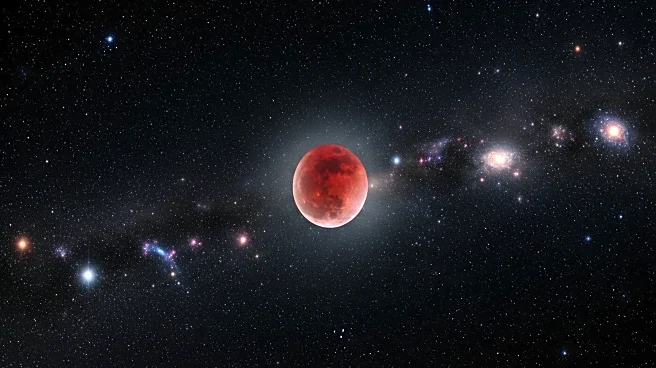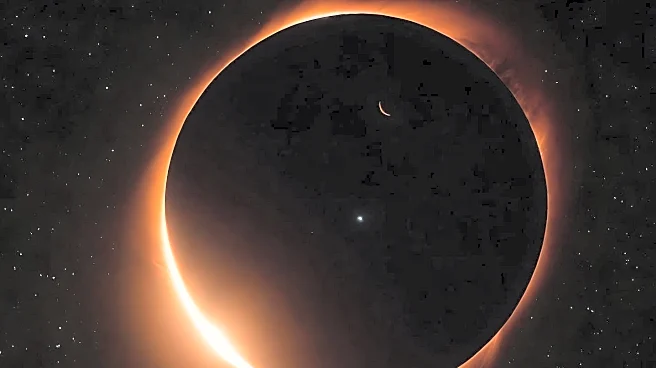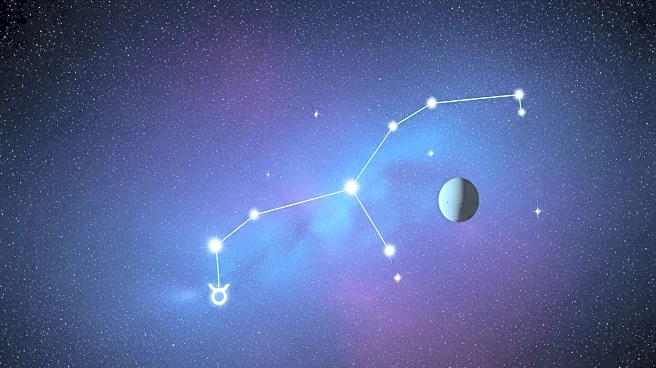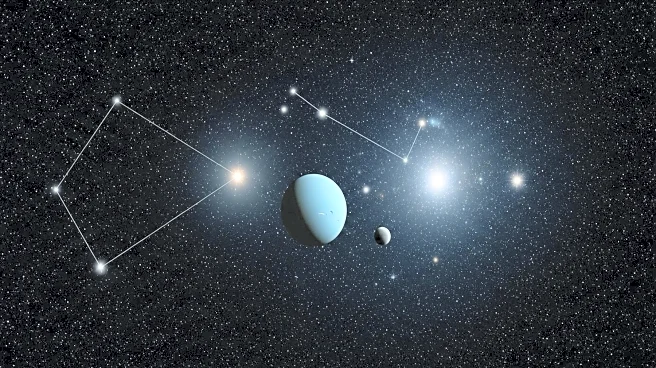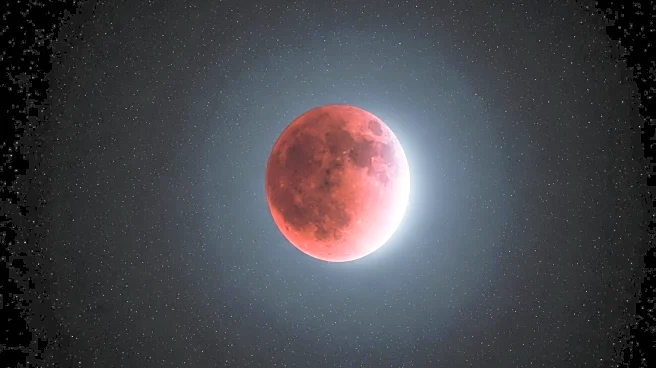What's Happening?
Uranus has reached its stationary point in the constellation Taurus, marking the beginning of its retrograde motion. This transition from prograde to retrograde will see Uranus moving westward relative to the background stars. Observers can spot Uranus in the early morning sky, approximately 25° above the eastern horizon by 1 A.M. local daylight time. It is located southwest of the Pleiades star cluster. Binoculars or a telescope are recommended for viewing, as Uranus appears as a bluish or grayish, non-stellar disk with a magnitude of 5.7. Over the coming weeks, Uranus will approach the stars 13 and 14 Tauri, passing south of them later in the year.
Why It's Important?
The retrograde motion of Uranus provides astronomers and enthusiasts with a unique opportunity to observe the planet's movement against the backdrop of stars. This event is significant for those interested in planetary motion and celestial navigation. The visibility of Uranus in the night sky allows for educational and observational activities, enhancing public interest in astronomy. The event also contributes to ongoing studies of planetary dynamics and the behavior of distant celestial bodies.
What's Next?
As Uranus continues its retrograde path, observers can track its progress relative to nearby stars, particularly 13 and 14 Tauri. This movement will be observable over the coming months, offering a chance for repeated observations and study. Astronomers may use this period to gather data on Uranus's motion and characteristics, contributing to broader research on planetary science.





